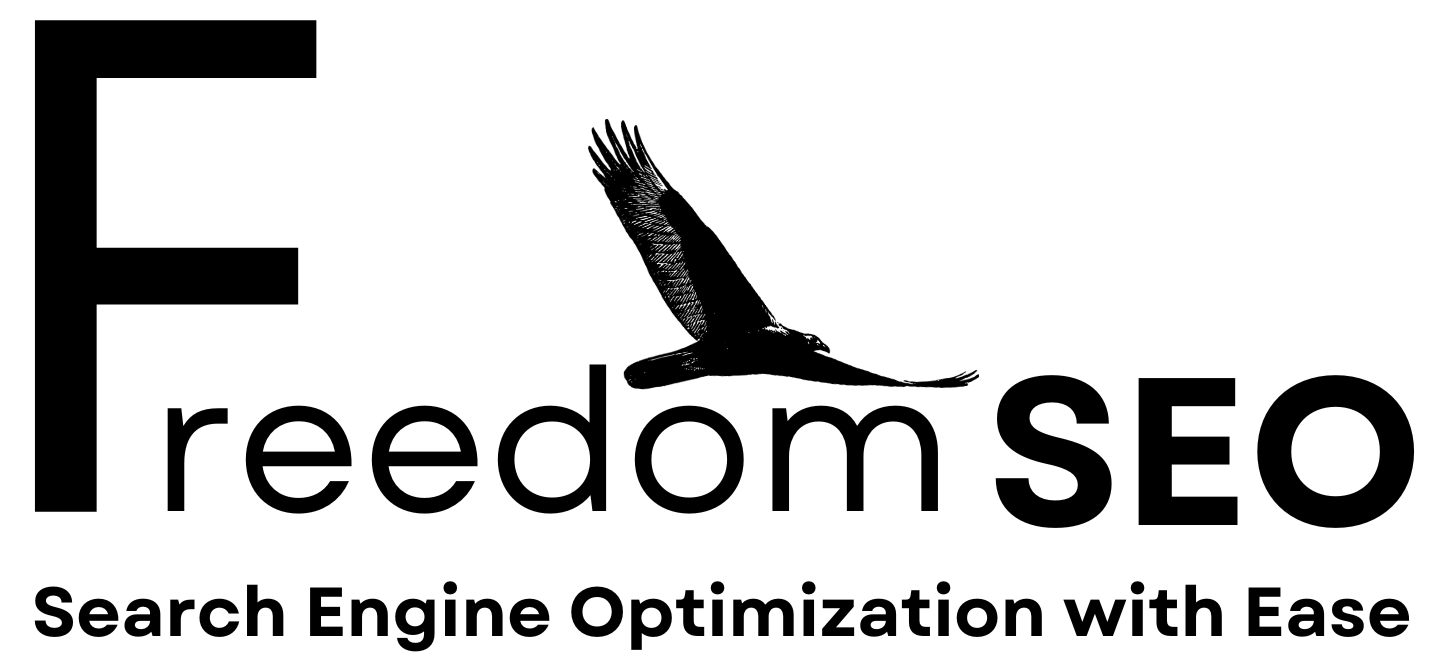7 Essential Tips for Choosing Green Web Hosting

Green web hosting might sound like a niche idea, but it is changing the way Canadians think about the internet. While most people assume data travels through invisible clouds, the reality is each website visit uses energy and impacts the climate. The numbers are shocking— U.S. data centers used about 4.4% of the nation’s entire electricity supply in 2023 . So what if your hosting choice could actually shrink your digital carbon footprint instead of growing it?
Table of Contents
- Understand What Green Web Hosting Means
- Look for Renewable Energy Certifications
- Evaluate the Hosting Provider’s Eco-Friendly Practices
- Check for Carbon Offset Programs
- Assess Server Efficiency and Technology
- Consider the Provider’s Commitment to Sustainability
- Compare Pricing and Features of Green Hosts
Quick Summary
| Takeaway | Explanation |
|---|---|
| Choose certified green hosts | Verify renewable energy certifications to ensure genuine commitment to sustainability. |
| Evaluate eco-friendly practices thoroughly | Assess providers’ strategies, such as energy efficiency and transparency in reporting. |
| Check for carbon offset programs | Ensure the provider actively invests in real projects that reduce greenhouse gas emissions. |
| Assess server efficiency and technology | Look for advanced technologies that minimize energy consumption and enhance performance. |
| Consider long-term sustainability commitments | Examine providers’ actions and plans for future investments in renewable energy and green practices. |
1: Understand What Green Web Hosting Means
Green web hosting represents a transformative approach to digital infrastructure that prioritizes environmental sustainability in website management. Unlike traditional web hosting that relies heavily on fossil fuel electricity, green web hosting focuses on minimizing carbon footprint and promoting renewable energy solutions.
At its core, green web hosting involves selecting web hosting providers who commit to reducing environmental impact through strategic practices. According to the U.S. Department of Energy , data centers and web hosting facilities can significantly lower their carbon emissions by implementing specific strategies:
- Utilizing renewable energy sources like solar and wind power
- Improving energy efficiency in server infrastructure
- Investing in carbon offset programs
- Implementing advanced cooling technologies
The environmental significance of green web hosting cannot be overstated. Typical data centers consume massive amounts of electricity , with Berkeley Lab reporting that U.S. data centers used approximately 4.4% of national electricity in 2023. By choosing green web hosting, businesses and individuals can directly contribute to reducing digital carbon emissions.
Key considerations when evaluating green web hosting include verifying the provider’s renewable energy claims, understanding their carbon neutrality commitments, and examining their overall energy management strategies. Providers should transparently demonstrate their environmental credentials through renewable energy certificates and detailed sustainability reports.
Beyond environmental benefits, green web hosting often correlates with improved technological efficiency. Providers committed to sustainability typically invest in modern, energy-efficient hardware and innovative cooling systems, which can result in faster website performance and more reliable hosting services.
By understanding the principles of green web hosting, you can make informed decisions that align your digital presence with broader environmental sustainability goals.
2: Look for Renewable Energy Certifications
When selecting a green web hosting provider, renewable energy certifications serve as critical indicators of genuine environmental commitment. These certifications provide transparent verification that a hosting company is actively supporting sustainable energy practices beyond mere marketing claims.
According to the Federal Trade Commission’s Green Guides , companies must meet stringent standards to make legitimate renewable energy claims. This means hosting providers cannot simply state they are “green” without substantial evidence.
Key renewable energy certifications to look for include:
- Green-e Energy Certification : A robust third-party verification program
- EPA Green Power Partnership : Demonstrates commitment to renewable electricity
- Renewable Energy Certificates (RECs) : Proves direct investment in clean energy sources
Verification matters . Not all renewable energy claims are created equal. A credible certification ensures that the web hosting provider is genuinely purchasing and retiring renewable energy credits, investing in sustainable infrastructure, or directly powering their data centers with clean energy sources.
When evaluating potential green web hosting providers, research their specific certification details. Look beyond surface-level claims and request documentation that demonstrates:
- Percentage of renewable energy used
- Sources of renewable energy (solar, wind, hydroelectric)
- Independent third-party verification processes
- Annual sustainability reports
Certifications protect consumers from greenwashing - the practice of making misleading environmental claims. By demanding transparent, certified evidence of renewable energy use, you ensure your web hosting decision genuinely supports environmental sustainability.
Beyond certifications, top green web hosting providers often publish comprehensive sustainability reports detailing their energy consumption, carbon offset investments, and long-term environmental strategies. These documents provide deeper insights into a company’s authentic commitment to reducing digital carbon footprints.
Remember, choosing a certified green web hosting provider is more than a technical decision - it’s a statement of environmental responsibility in the digital age.
3: Evaluate the Hosting Provider’s Eco-Friendly Practices
Evaluating a web hosting provider’s eco-friendly practices requires careful examination beyond surface-level marketing claims. Genuine environmental commitment involves comprehensive strategies that reduce carbon footprint and promote sustainable digital infrastructure.
According to the Department of Energy’s Federal Energy Management Program , key performance indicators for assessing a hosting provider’s environmental practices include:
- Power Usage Effectiveness (PUE) : Measures data center energy efficiency
- Energy Reuse Effectiveness (ERE) : Tracks heat recovery and reuse
- Water Usage Effectiveness (WUE) : Evaluates water consumption in cooling systems
Technological infrastructure plays a crucial role in determining a provider’s environmental impact. Look for providers who invest in advanced cooling technologies, utilize high-efficiency servers, and implement intelligent power management systems.
Additional factors to consider when evaluating eco-friendly practices include:
- Transparency in sustainability reporting
- Investments in renewable energy infrastructure
- Carbon offset programs
- Use of energy-efficient hardware
- Commitment to continuous environmental improvement
Some progressive hosting providers go beyond basic sustainability measures by designing innovative data center architectures . These might include liquid cooling systems, modular server designs, and locations strategically chosen for natural cooling opportunities.
Financial investments in sustainability are equally important. learn more about sustainable hosting technologies , providers demonstrating long-term commitment often allocate significant resources to research and development of green technologies.
Providers should be able to provide detailed documentation about their environmental strategies, including annual sustainability reports, third-party audits, and specific metrics demonstrating their carbon reduction efforts. Transparency is key in verifying genuine environmental commitment.
Remember, choosing an eco-friendly web hosting provider is not just about reducing environmental impact—it’s about supporting a broader movement towards sustainable digital infrastructure.
4: Check for Carbon Offset Programs
Carbon offset programs represent a critical mechanism for web hosting providers to neutralize their environmental impact beyond renewable energy adoption. These programs enable companies to invest in projects that actively remove or reduce greenhouse gas emissions, effectively compensating for their carbon footprint.
According to the Federal Trade Commission’s Green Guides , carbon offset claims must meet rigorous scientific and ethical standards. Credible carbon offset programs require transparent, verifiable methodologies that ensure genuine environmental benefits.
Key characteristics of robust carbon offset initiatives include:
- Measurable and quantifiable greenhouse gas reductions
- Independent third-party verification
- Projects that create additional environmental value
- Long-term sustainability of proposed interventions
Evaluating offset programs demands careful scrutiny. Web hosting providers should demonstrate how their carbon offset investments translate into concrete environmental improvements. This might involve supporting:
- Reforestation projects
- Renewable energy infrastructure development
- Methane capture from agricultural or landfill sites
- Community-based sustainable development initiatives
The most effective carbon offset programs go beyond simple monetary transactions. They create meaningful environmental and social impact , supporting local communities and developing sustainable infrastructure that generates long-term ecological benefits.
Discover sustainable hosting solutions for Canadian businesses that prioritize comprehensive carbon management strategies. Look for providers who offer detailed reporting on their offset investments, including specific project locations, emission reduction quantities, and verified impact assessments.
Importantly, carbon offsets should not be viewed as a complete solution but as part of a holistic approach to environmental responsibility. The most responsible web hosting providers will combine offset programs with direct efforts to reduce their own emissions, invest in renewable energy, and implement energy-efficient technologies.
By carefully evaluating a hosting provider’s carbon offset programs, you can make an informed decision that supports genuine environmental sustainability in the digital ecosystem.
5: Assess Server Efficiency and Technology
Server efficiency represents a critical component of green web hosting, directly impacting the environmental footprint of digital infrastructure. Modern web hosting providers must demonstrate technological sophistication that goes beyond basic performance metrics.
According to the ENERGY STAR Computer Servers Guidelines , cutting-edge server technology should prioritize several key efficiency parameters:
- Power supply efficiency across different load levels
- Advanced processor power management capabilities
- Real-time temperature and fan management systems
- Default energy-saving configurations
Technological innovations in server design can dramatically reduce energy consumption. This includes implementing virtualization technologies, which allow multiple virtual servers to operate on a single physical machine, significantly reducing overall power requirements.
Key considerations for assessing server efficiency include:
- Server utilization rates
- Power consumption metrics
- Cooling infrastructure efficiency
- Hardware refresh cycle strategies
- Deployment of energy-efficient processors
Modern data centers are increasingly adopting intelligent power management strategies. These include dynamically scaling computing resources based on actual demand, which prevents unnecessary energy consumption during low-traffic periods.
Explore advanced website performance strategies that align with energy-efficient technological approaches. Providers committed to sustainability will offer transparent reporting on their server efficiency metrics, demonstrating a quantifiable commitment to reducing digital carbon footprints.
The most progressive web hosting providers invest in cutting-edge technologies like liquid cooling systems, energy-efficient processors, and advanced virtualization techniques. These technologies not only reduce environmental impact but often translate to improved performance and reliability for hosted websites.
Ultimately, assessing server efficiency goes beyond technical specifications—it represents a holistic approach to responsible digital infrastructure that balances performance, cost, and environmental stewardship.
6: Consider the Provider’s Commitment to Sustainability
Sustainability is more than a buzzword for responsible web hosting providers—it represents a comprehensive approach to environmental stewardship that extends far beyond simple marketing claims. True commitment requires transparent, measurable actions that demonstrate genuine environmental responsibility.
According to the Environmental Protection Agency’s Green Power Market Guidelines , credible sustainability commitments must be backed by verifiable actions and transparent reporting. Authentic sustainability involves a holistic strategy that encompasses multiple dimensions of environmental impact.
Key indicators of a provider’s genuine sustainability commitment include:
- Long-term renewable energy procurement strategies
- Transparent environmental reporting
- Ongoing investment in green technologies
- Measurable carbon reduction targets
- Independent third-party environmental certifications
Corporate sustainability goes beyond simple carbon offsetting. The most responsible web hosting providers develop comprehensive strategies that integrate environmental considerations into every aspect of their operations.
Important factors to evaluate include:
- Annual sustainability reports
- Specific, measurable environmental goals
- Investment in research and development of green technologies
- Community engagement in environmental initiatives
- Transparent supply chain sustainability practices
Learn about sustainable digital infrastructure and how it impacts broader environmental objectives. Providers truly committed to sustainability will demonstrate a proactive approach that extends beyond compliance.
The most progressive web hosting companies view sustainability as a core business strategy, not just an additional feature. They invest in cutting-edge technologies, support environmental research, and actively work to reduce their overall ecological footprint.
Ultimately, a provider’s commitment to sustainability should be evident in their actions, reporting, and long-term strategic planning. Look for companies that provide detailed, transparent documentation of their environmental efforts, including specific metrics, third-party audits, and clear roadmaps for future sustainability improvements.
Choosing a web hosting provider with a genuine commitment to sustainability means supporting a broader movement towards responsible digital infrastructure.
7: Compare Pricing and Features of Green Hosts
Comparing green web hosting providers requires a nuanced approach that balances environmental commitments with practical business needs. Cost should not be the only determining factor when selecting a sustainable hosting solution.
According to the EPA’s Green Power Procurement Guidelines , comparing green hosting options involves evaluating multiple dimensions beyond simple pricing structures. Sustainable hosting demands a comprehensive assessment of value and environmental impact.
Key pricing and feature considerations include:
- Total cost of hosting services
- Performance metrics and uptime guarantees
- Renewable energy percentage
- Carbon offset investments
- Scalability of hosting plans
Cost-effective green hosting doesn’t necessarily mean the cheapest option. Providers with robust sustainability credentials might have slightly higher prices, but they deliver significant long-term value through advanced technologies and environmental stewardship.
Important evaluation criteria to examine:
- Energy efficiency ratings
- Transparent sustainability reporting
- Infrastructure technology
- Customer support quality
- Flexibility of hosting packages
Explore sustainable hosting solutions for Canadian businesses that balance performance, cost, and environmental responsibility. Smart comparison involves looking beyond headline prices to understand the full value proposition.
Many green web hosting providers offer tiered pricing models that allow businesses to select plans matching their specific environmental and performance requirements. Some even provide detailed breakdowns of their carbon reduction efforts, helping customers make informed decisions.
Advanced hosting providers might charge a modest premium for their green technologies, but this investment translates into tangible benefits. These include improved server efficiency, reduced environmental impact, and potential long-term cost savings through innovative energy management strategies.
Ultimately, comparing green web hosting providers is about finding the right balance between environmental commitment, technological performance, and financial feasibility. The most responsible choice considers the broader impact of your digital infrastructure.
The table below offers a comprehensive summary of the seven essential tips for choosing green web hosting covered throughout the article.
| Tip / Area | Key Actions or Considerations | Benefits / Outcomes |
|---|---|---|
| Understand Green Web Hosting | Learn the environmental impact of hosting, verify provider transparency, look for renewable solutions | Reduced digital carbon footprint, sustainable web presence |
| Look for Renewable Energy Certifications | Check for Green-e, EPA Green Power, RECs, and official documentation | Proof of genuine renewable energy use, protection from greenwashing |
| Evaluate Eco-Friendly Practices | Assess PUE/WUE, energy-efficient hardware, advanced cooling, transparent sustainability reporting | Improved energy efficiency, lower emissions, reliable service |
| Check for Carbon Offset Programs | Confirm third-party verified, measurable offset projects (reforestation, renewables, methane capture) | Neutralized carbon footprint, support for impactful climate projects |
| Assess Server Efficiency & Technology | Examine modern servers, virtualization, intelligent power/cooling management, transparent metrics | Lower energy consumption, enhanced performance, responsible infrastructure |
| Consider Commitment to Sustainability | Look for long-term planning, public reports, R&D, community and supply chain engagement | Ongoing environmental leadership, trust and accountability |
| Compare Pricing & Features | Balance cost, uptime, support, renewable %, scalability, transparent reporting | Informed decision making, maximum value, responsible and effective hosting |
Power Your Canadian Business with Green Web Hosting and Proven SEO
Choosing the right green web hosting is about more than energy efficiency and low carbon footprints. The real challenge is making sure your sustainable website actually attracts customers and ranks high on Google. If you want to align your business with eco-friendly practices, while also staying competitive online, you need expert support that understands both green hosting technology and local SEO. Freedom SEO helps Canadian businesses bridge this gap by combining sustainable hosting strategies with results-driven optimization.

Ready to showcase your commitment to sustainability and boost your search rankings at the same time? Visit Freedom SEO for solutions designed for Canadian businesses. Our team not only guides you through choosing the best green web hosting but also provides fast website builds and hosting upgrades. Connect for a free consultation to discover how our green hosting expertise and SEO services can get your business into Google’s top 3 and drive real, measurable growth today.
Frequently Asked Questions
What is green web hosting?
Green web hosting refers to a method of hosting websites that prioritizes environmental sustainability. It involves using renewable energy sources and adopting energy-efficient practices to minimize carbon footprints.
How can I verify a web hosting provider’s green claims?
You can verify a provider’s claims by looking for renewable energy certifications such as Green-e Energy Certification or EPA Green Power Partnership. These certifications provide documented proof of a provider’s commitment to sustainable practices.
What are the key features to consider when choosing a green web host?
Key features include the percentage of renewable energy used, carbon offset investments, server efficiency metrics, transparency in sustainability reporting, and the overall scalability of hosting plans.
How do carbon offset programs work in web hosting?
Carbon offset programs allow web hosting providers to invest in projects that reduce or remove greenhouse gas emissions, effectively compensating for their own carbon output. These initiatives can include reforestation projects or renewable energy infrastructure development.
Recommended
-
[
Website Hosting and SEO: Essential Tips for Canadians in 2025
]( https://freedomseo.ca/website-hosting-and-seo-essential-tips-for-canadians-in-2025 )
-
[
Essential Website Redesign Checklist for Canadian Business Owners
]( https://freedomseo.ca/essential-website-redesign-checklist-for-canadian-business-owners )
-
[
Website Speed Optimization Tips for Canadian Businesses 2025
]( https://freedomseo.ca/website-speed-optimization-tips-for-canadian-businesses-2025 )
-
[
How Web Design Affects SEO: Tips for Canadian Businesses 2025
]( https://freedomseo.ca/how-web-design-affects-seo-tips-for-canadian-businesses-2025 )
















